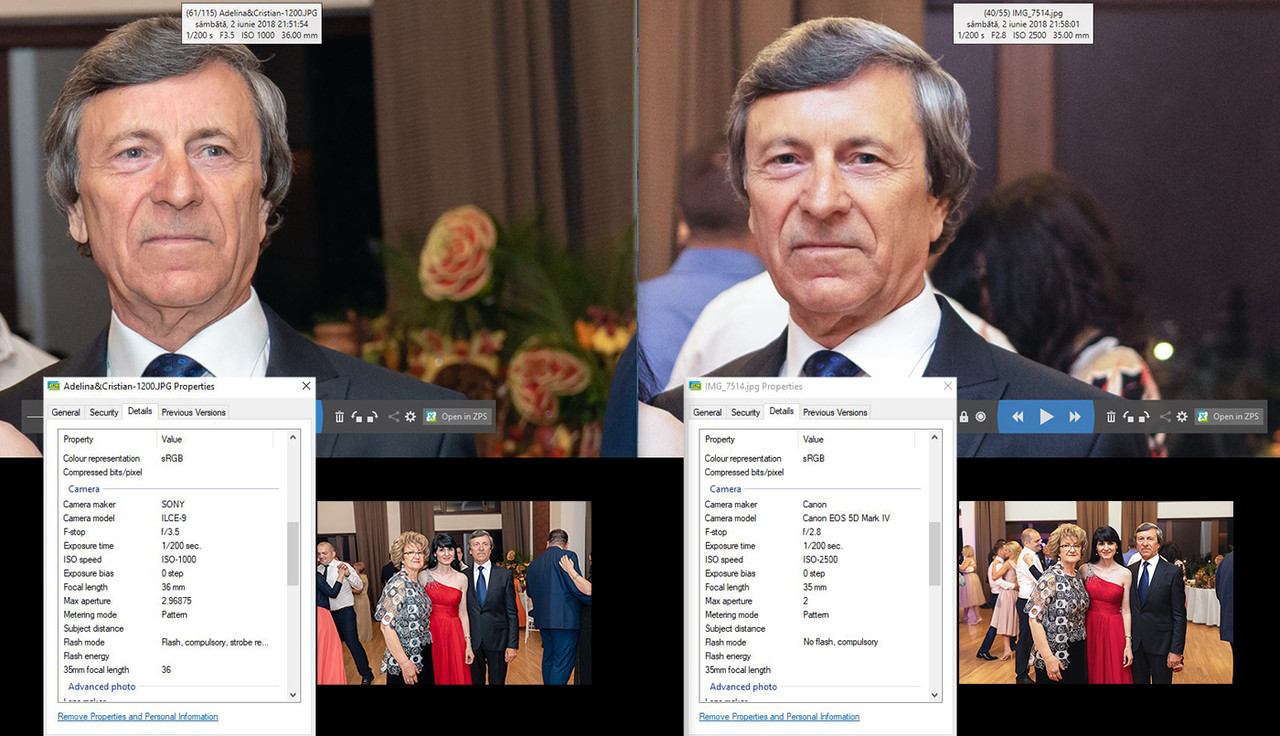Winder, here is another example from where people can draw some conclusions. These 2 images are from a wedding were I was the godfather. The photographer hired to shot the wedding was using a Sony A9. He had 2 flashes on stands aimed at the white ceiling and one flash on his camera. I didn't had a flash with me because I was there to party, not to take pictures.

But my wife wanted a image with her parents and I took a shot of them between 2 glases of wine.

The official photographer was next to me and he also took a shot. I inserted in the print screen the exif for both images.
The official photographer image details are: Sony A9,
f3.5, 1/200s,
ISO 1000,
3 flashes (2 on stands and one on camera). Total cost of the gear (without flashes and stands):
6196$
Sony A9 body: 3998$ at B&H
Sony 24-70mm f2.8 GM: 2198$ at B&H
The details of my image are: 5D Mark IV,
f2.8, 1/200s,
ISO 2500,
no flash. Total cost of the gear:
3648$
Canon 5D Mark IV: 3099$ at B&H
Canon 35mm f2 IS USM: 549$
Look at the details on my father in law wrinkles (without the help of the flash, as the photographer shooting with Sony A9 had). Do you think that if I was shooting at ISO 1000 instead of ISO 2500, with flashes, at f3.5 instead of f2.8 and with the 24-70mm f2.8L lens instead of 35mm f2, the Sony images would have been better?
I really really doubt it.

But, people are influenced by Tony Northrup or DPreview reviews, they are also influenced by lab tests where someone shoot a paper with camera on tripod and with controled light and they actually think that in real life shooting conditions the differences in image quality between Pro full frame cameras are big enough to make a difference...

The real differences are on:
- af (depending on what you are shooting)
- the fps and the buffer of the camera (depending on what you shoot)
- the system behind the camera (lenses and accesories)
And one major part (or influence) has the photographer behind the camera.

Mirrorless will be the future, but for the moment the "average at best" DSLR cameras can challenge the high end mirrorless cameras anytime.

The secret is to stop watching cancan reviews and go out and shoot and gain confidence in yourself.


 Similar Threads
Similar Threads 





 The real differences are on:
The real differences are on:





 Post #75 by johnmflores
Post #75 by johnmflores








